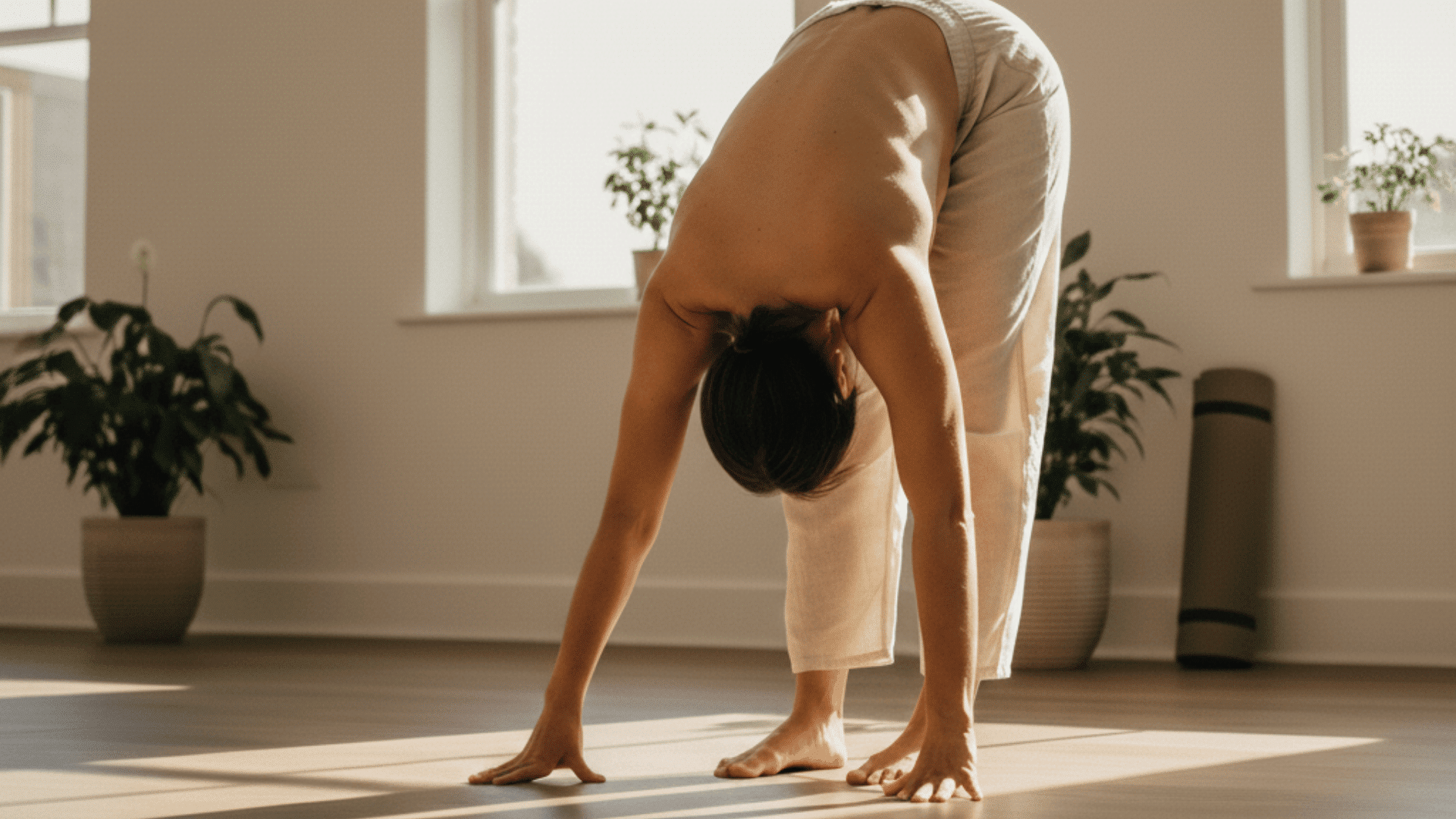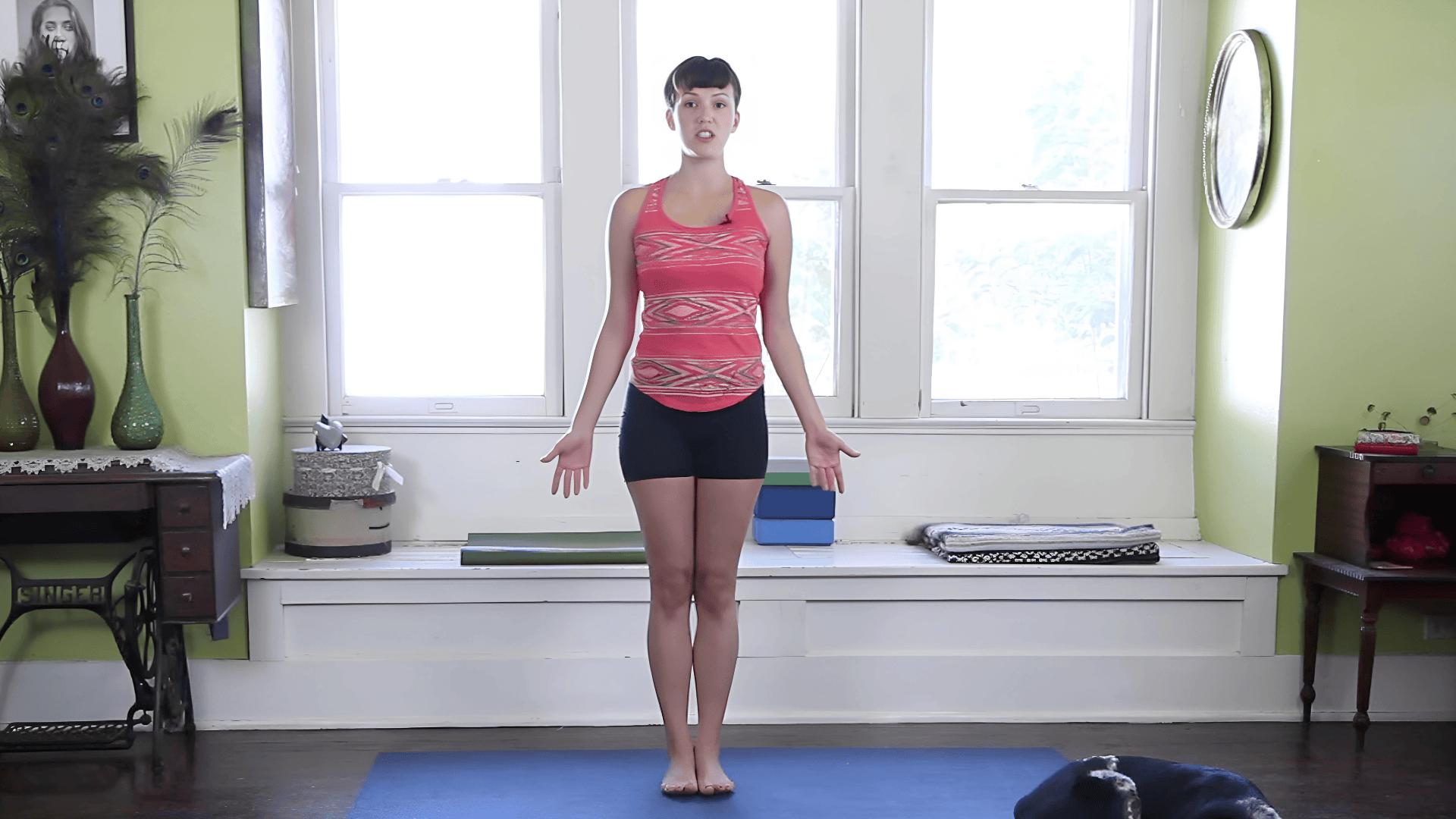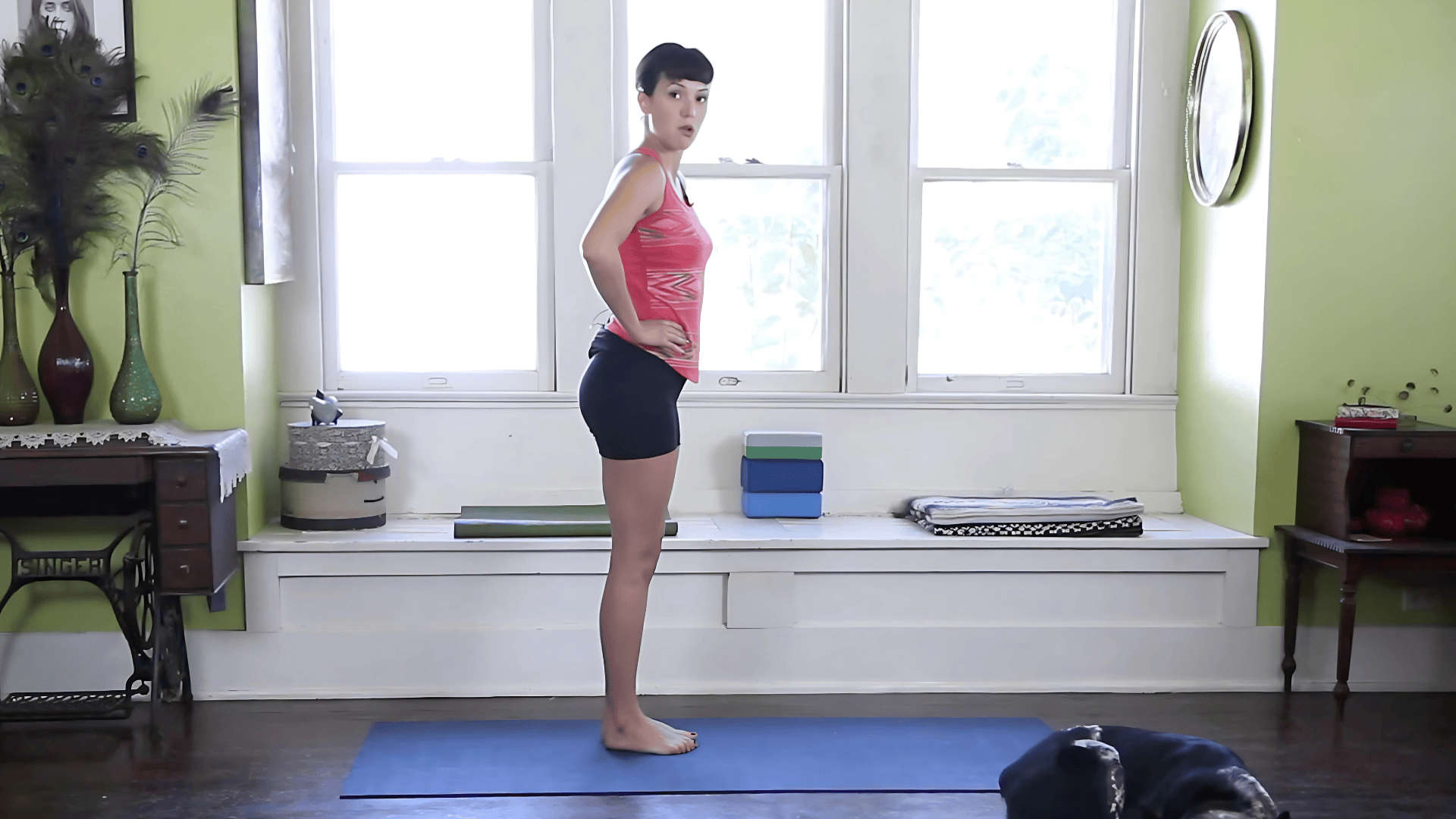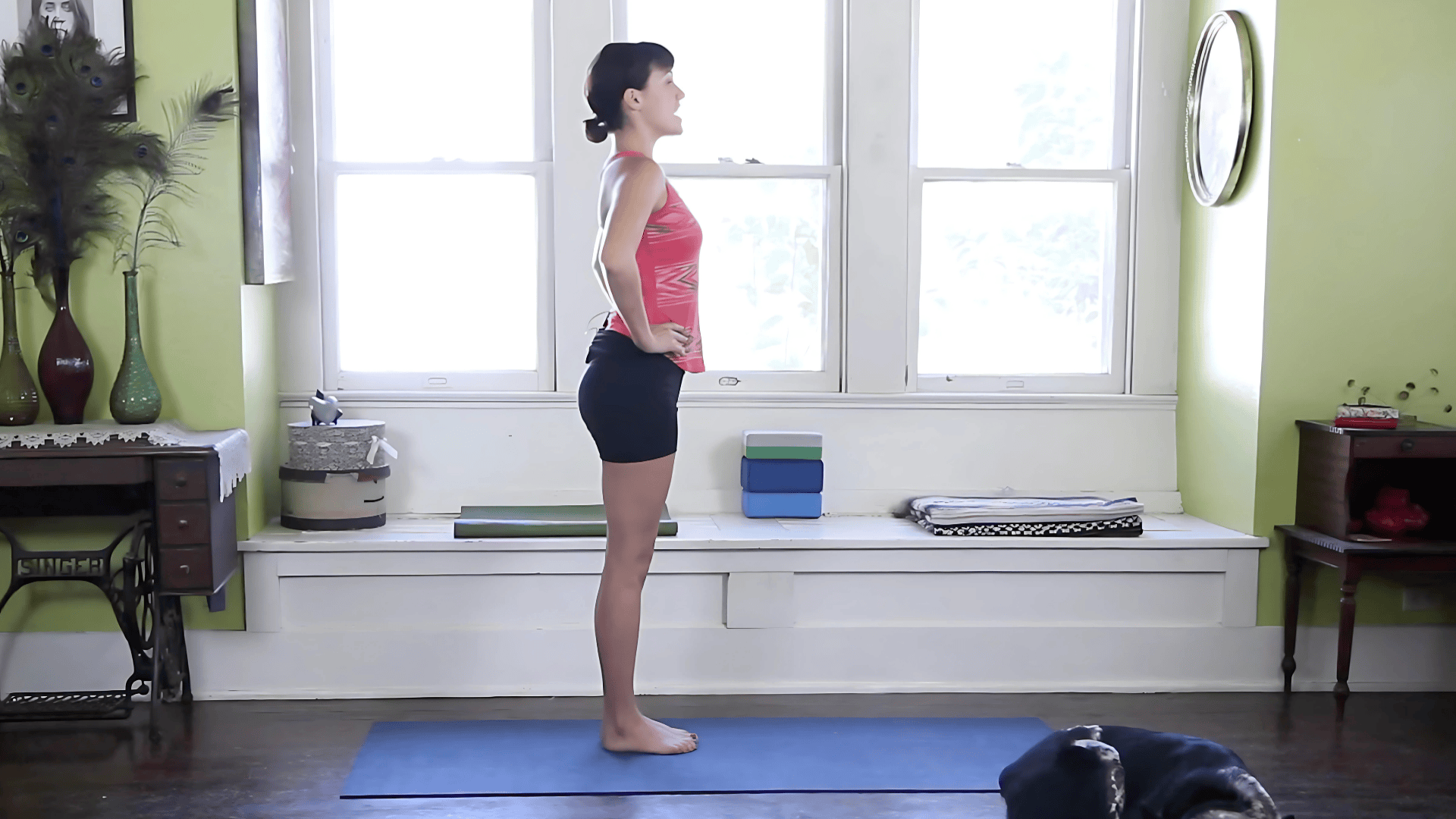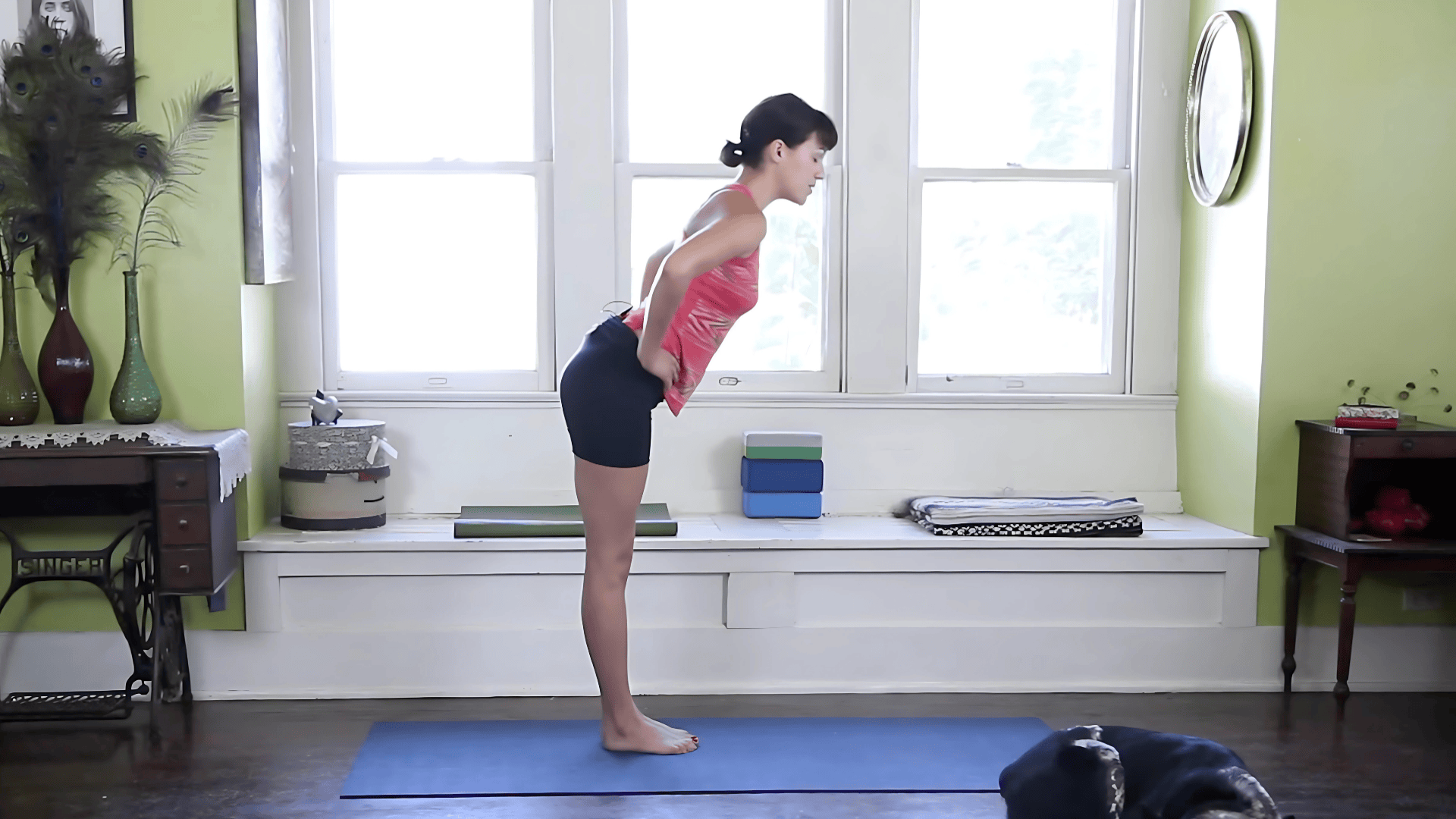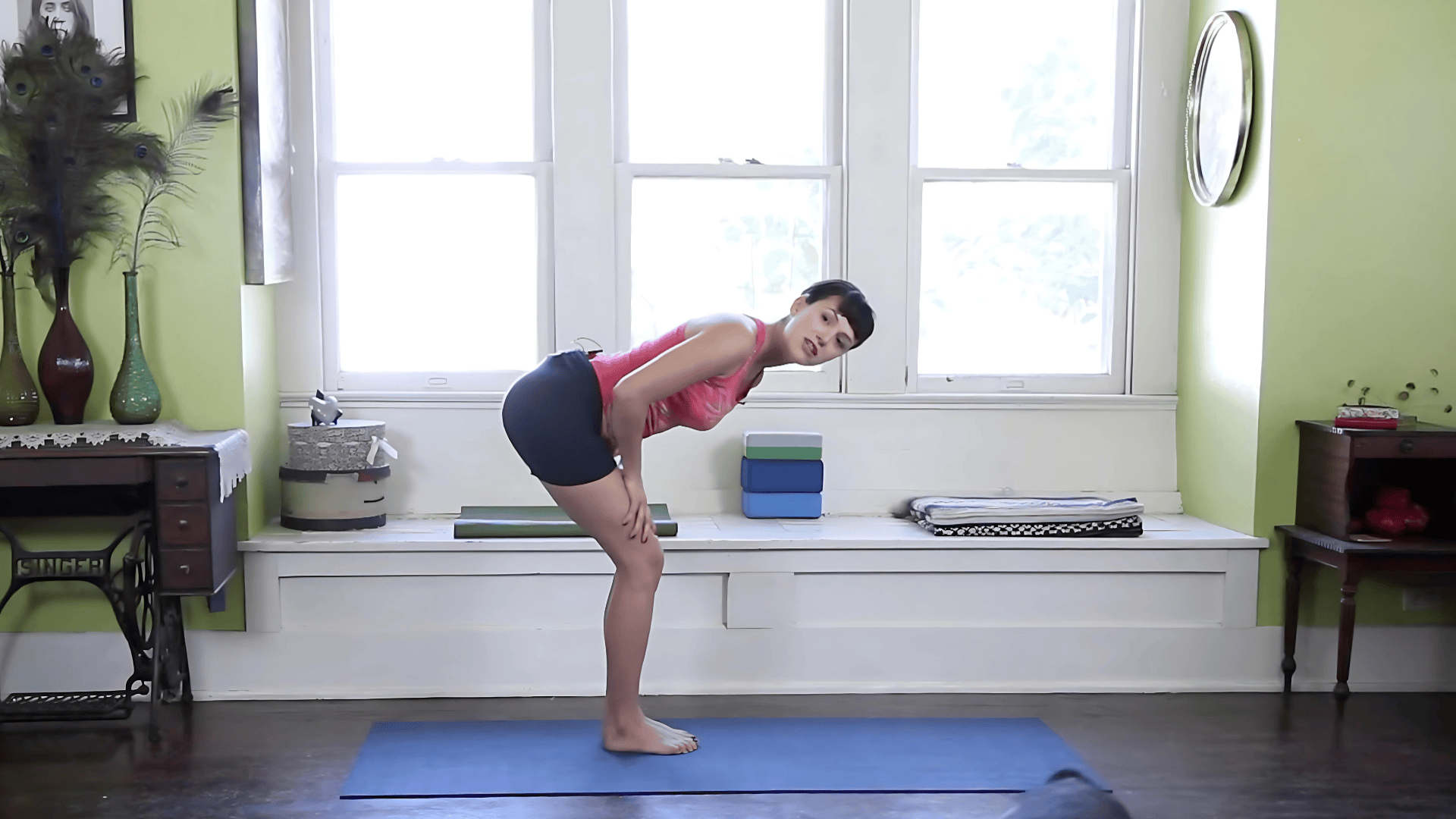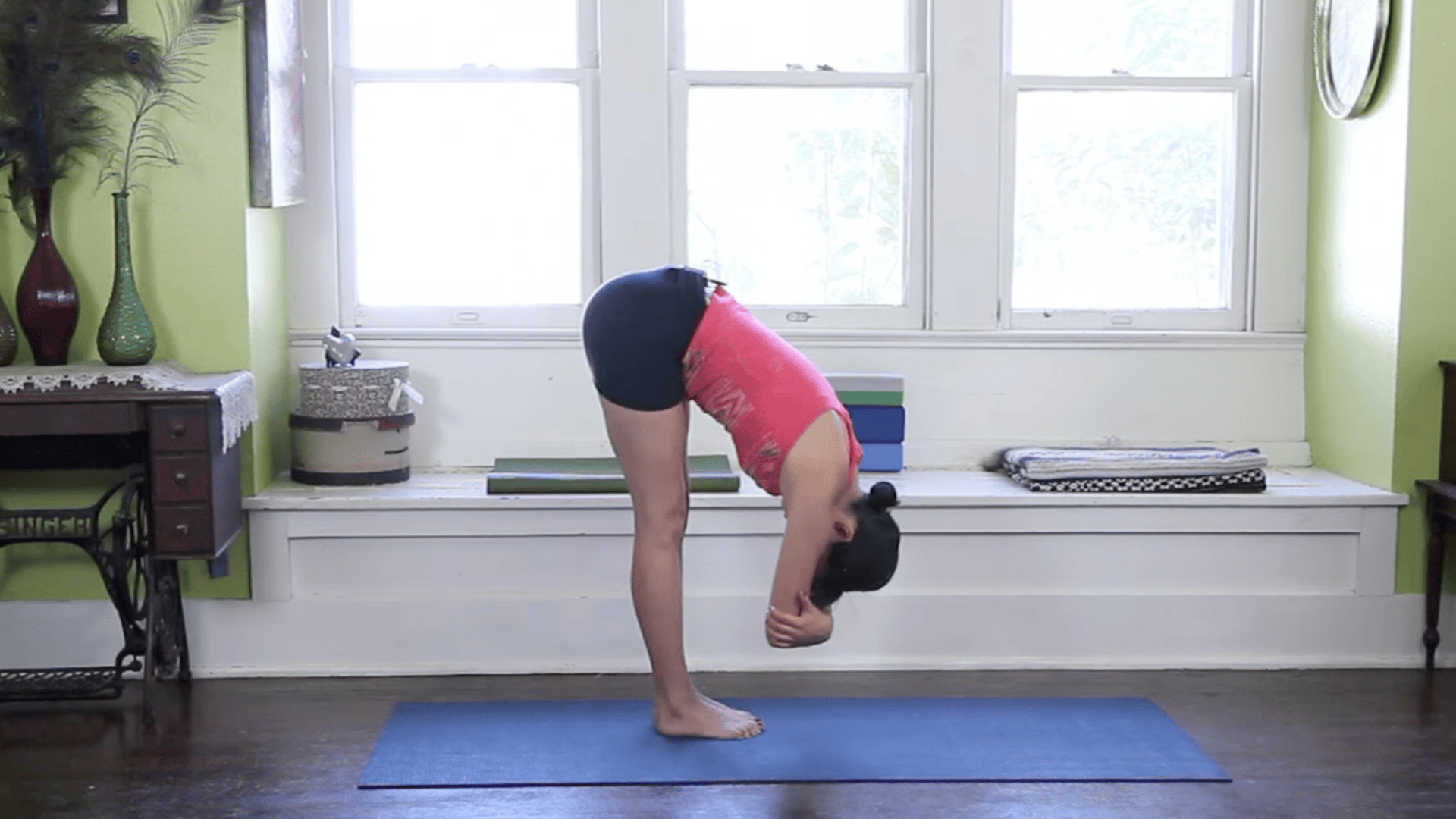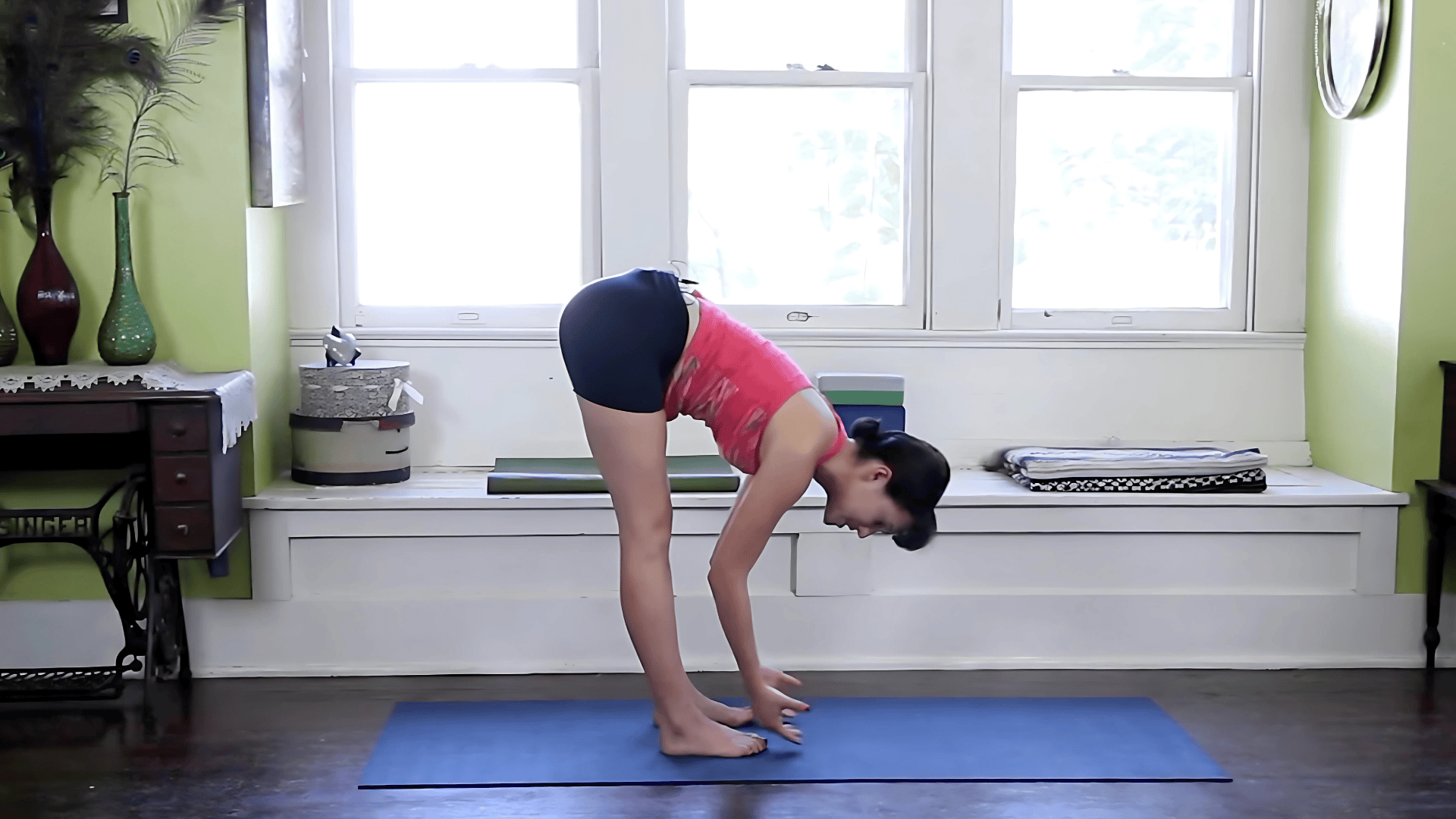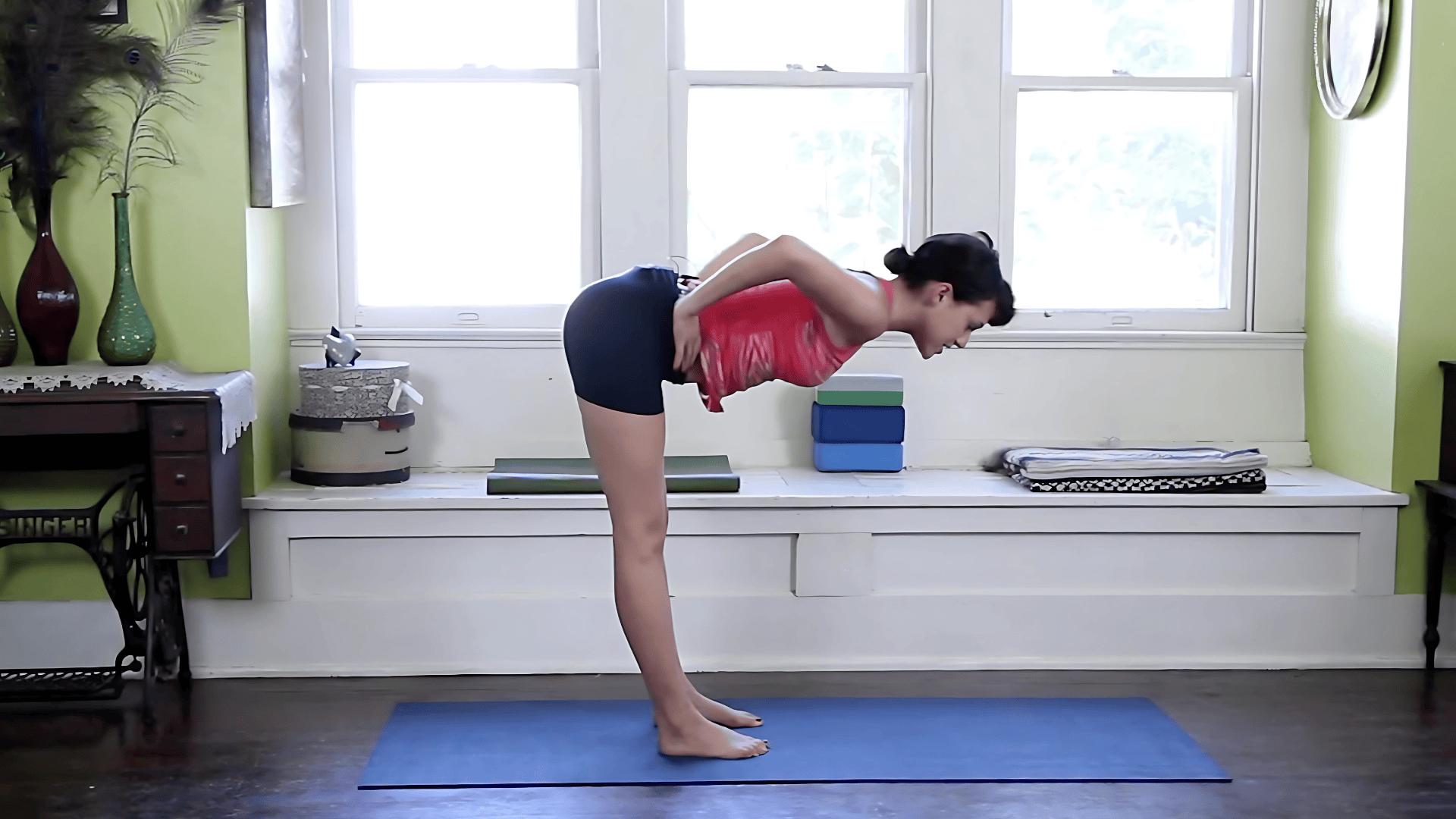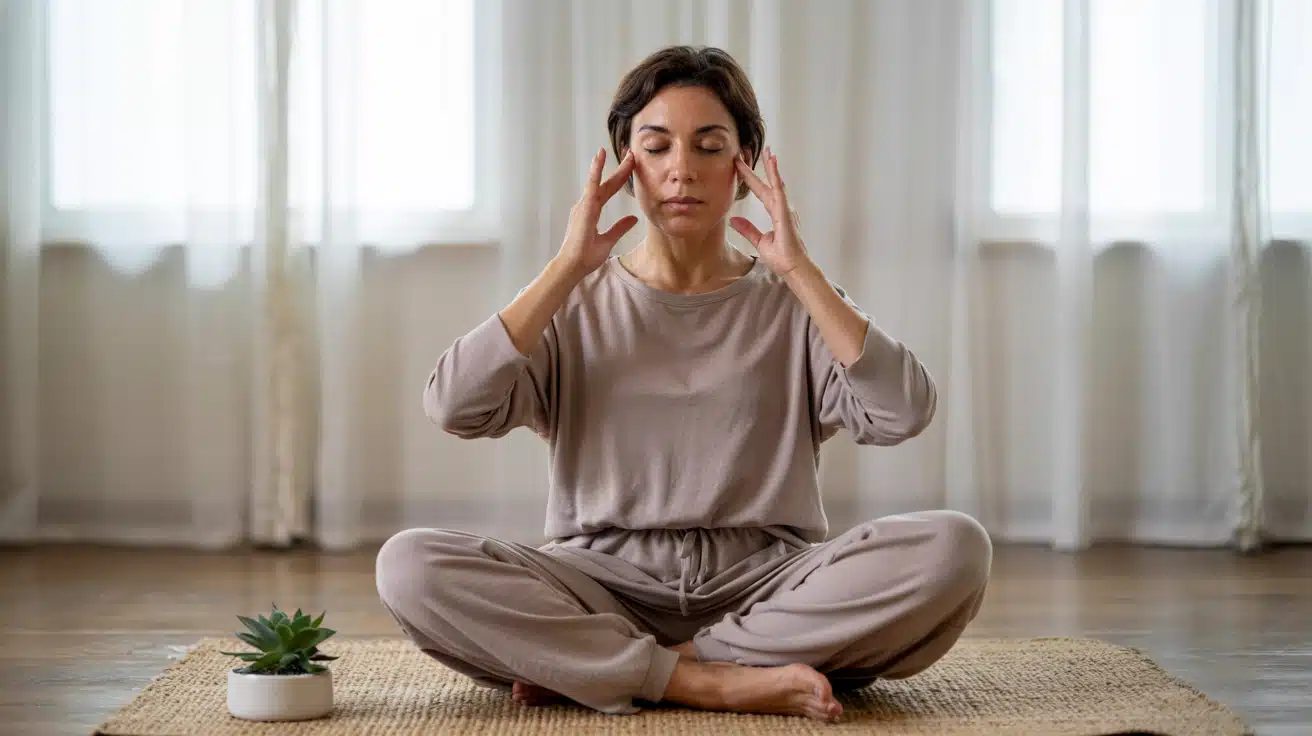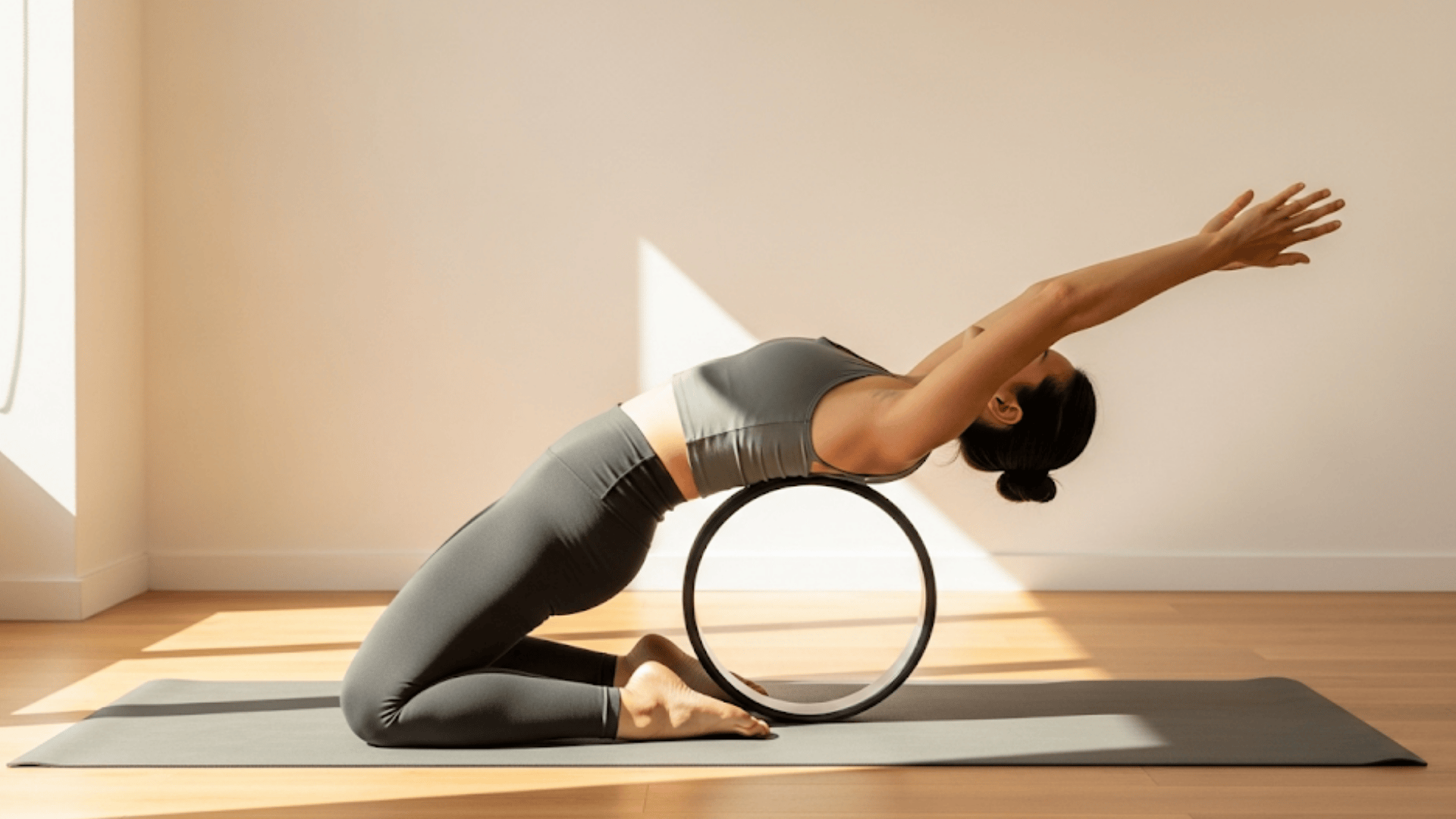Tight hamstrings and lower back pain affect millions of people daily. Hours of sitting create stiffness that affects comfort and movement.
The forward fold stretch offers a simple yet effective solution to release tension in your posterior chain while improving flexibility.
This stretch works by lengthening your hamstrings, calves, and lower back muscles through gentle forward bending.
You’ll learn proper form, avoid common errors, and understand why this movement deserves a spot in your daily routine.
The forward fold stretch takes just minutes but delivers lasting benefits for your posture, pain relief, and overall mobility.
What is the Importance of a Forward Fold Stretch?
The forward fold stretch plays a vital role in counteracting the effects of modern living. Your body adapts to the positions you spend the most time in.
When you sit for hours, your hip flexors tighten and your hamstrings shorten.
This creates a chain reaction throughout your body. Your pelvis tilts, your lower back curves more than it should, and your shoulders round forward.
The forward fold stretch directly addresses these issues by reversing the sitting position.
Think of it as hitting the reset button for your posture. You’re actively lengthening the muscles that get tight from daily habits. This simple movement helps restore your body’s natural alignment, allowing you to move freely.
The Forward Fold Stretch: Step-by-Step Instructions
The forward fold stretch requires proper setup and slow, controlled movement. Follow these steps to perform the stretch safely and maximize the benefits from each session.
Step 1: Start in Mountain Pose
Stand with your feet hip-width apart. Spread your weight evenly between all four corners of your feet. Lift your toes to help establish balance.
Tuck your pelvis in and find natural lift in your heart. Squeeze your shoulder blades together and down. Keep your chin parallel to the ground.
Step 2: Position Your Hands
Place your hands on your waist. Hook your thumbs behind your waistline for support. This creates a stable base before you begin the forward fold movement.
Step 3: Prepare Your Body
Draw your belly button in toward your spine. Stack your spine tall. Squeeze your shoulder blades together like a superhero pose. Press into your heels and draw energy up through the arches of your feet.
Step 4: Begin the Forward Fold
Inhale and extend through the crown of your head. As you exhale, keep a nice lift in your heart and straight spine. Move forward slowly.
Draw the tops of your thighs up and kneecaps up. Begin to shine your sit bones toward the wall behind you.
Step 5: Bend Your Knees
Soften through your knees and bend them as much as you need. This is important for beginners. Your hamstrings might feel tight, and that’s normal. Bend your knees generously to protect your lower back.
Step 6: Release Forward
Melt down with your belly moving toward the tops of your thighs. Once the weight of your head releases down, draw your fingertips to the mat, palms to your shins, or grab your elbows and rock side to side.
Step 7: Focus on Your Breath
Let the weight of your body hang over. Take deep, solid breaths. Use your breath to find lengthening as you inhale and release deeper on the exhale.
Step 8: Come Back Up
Bring your hands back to your waistline and hook your thumbs behind. Press into your heels and draw your shoulder blades together.
Lift through the crown of your head. Use your thumbs to remind yourself to tuck your pelvis in. Rise up slowly with breath moving through the backs of your legs.
Video Tutorial
Special thanks to Yoga with Adriene for providing valuable insights in their video, which I referenced while creating this guide.
Common Errors While Performing a Forward Fold
Many people rush into the forward fold stretch without proper preparation. This can lead to injury and limit the benefits you gain from the movement. Here are the key errors to watch out for.
1. Forcing the stretch too quickly
Your hamstrings need time to open up. You can’t expect magic to happen immediately. Move slowly and be patient with your body’s natural process.
2. Keeping legs completely straight
Beginners often think they must keep their legs perfectly straight. This puts strain on your hamstrings and lower back. Bend your knees as much as you need to.
3. Holding your breath
Breathing is crucial for creating space in tight muscles. Take deep, solid breaths throughout the stretch. This helps your muscles relax and lengthen naturally.
4. Rounding the back too early
Keep your spine straight and heart lifted as you begin moving forward. The rounding should happen naturally as you release the weight of your head.
Benefits of Forward Fold Stretch
The forward fold stretch offers both physical and mental benefits that make it worth adding to your daily routine.
- Stretches hamstrings and calves: Lengthens tight muscles in the back of your legs
- Relieves lower back tension: Helps counter the effects of sitting and poor posture
- Improves spinal flexibility: Creates space between vertebrae and increases mobility
- Calms the nervous system: The forward folding motion has a soothing effect on your mind
- Increases blood flow to the brain: Inverted position brings fresh blood and oxygen upward
- Releases hip flexor tightness: Helps open up muscles that get tight from sitting
- Better posture throughout the day: Regular practice helps restore natural spine alignment
Is the Forward Fold Stretch Right for You?
People with certain health conditions should avoid or modify this stretch. If you have lower back injuries, herniated discs, or severe sciatica, skip the forward fold until you get medical clearance.
Those with high blood pressure or glaucoma should be cautious since the head-down position can increase pressure.
Pregnant women in their second and third trimesters should also avoid deep forward folds. When in doubt, always consult your doctor or physical therapist before attempting new stretches.
To Sum It Up
The forward fold stretch serves as your body’s reset button after long days of sitting and stress.
Remember to start slowly, bend your knees when needed, and focus on consistency and mindful movement, as these are what matter most.
Your hamstrings will thank you for the attention, and your posture will improve with regular practice. This simple movement addresses the root cause of modern stiffness. It reverses the effects of prolonged desk work.
What’s your next step? Start with just five minutes daily and build from there. Consistency matters more than perfection.
Your future self will feel the difference in both physical comfort and mental calm.

